Moniek Bloks's Blog, page 26
January 1, 2025
Beatrice of Portugal – “Beautiful in face and body” (Part two)
The journey to Nice lasted 49 days, and the fleet stopped several times along the way. One stop was rather long due to a storm. Beatrice finally arrived on 29 September, and she awaited the arrival of Charles. Chroniclers did not speak particularly well about Charles’s appearance. In 1530, one of the ambassadors wrote that he was twice her age and was ugly.1 Upon meeting her, Charles kissed on her the cheek and began to prepare to have her disembark the ship, even though this went against the protocol ordered by her father.
On 1 October, the religious ceremony was performed in the church of St. Dominic in Nice. After this, a banquet followed, and in the evening, there was music and dancing. Rumours about the wedding night stated that “after they had retired, the Duke went to the Infanta, and there was the first night with her, during which some of the ladies said that the Duke would not go to hell for the sin of lust.”2
Beatrice was saddened to learn of her father’s death in December 1521 but his successor and her brother, John, tried his best to stay in touch with his sister. Beatrice kept up a correspondecnce with many members of her family, including her sister Isabella, who married Charles V, Holy Roman Emperor, in 1526.
Beatrice had fallen pregnant quickly following the consummation of her marriage. Around 11 in the morning on 19 November 1522, Beatrice gave birth to a son who received the traditional title of Prince of Piedmont. The celebrations were immense, and the bells of the churches rang continuously. One month later, the boy was christened with the names Adrian Jordan Amadeus, and his godfather was Pope Adrian VI. Tragically, the celebrations were short-lived. Little Adrian died on 10 January 1523. It would be the first of many tragedies for Beatrice and Charles.
Beatrice would go on to give birth to a total of ten children, including an unnamed daughter in 1526. Her second, Louis, was born in 1523, but he died at the age of 13 in 1536. A daughter named Catherine was born in 1529, and she died in 1536. Her only surviving child, Emmanuel Philibert, was born in 1528. A daughter named Maria was born in 1530, and she died that same year. A daughter named Isabella was born in 1532, and she died the following year. Both in 1533 and 1534, she gave birth to short-lived sons named Manuel. The birth of her final child, John Maria, in December 1537 would cost Beatrice her life. The infant lived for just a month.
In 1530, Beatrice and Charles attended the imperial coronation of Emperor Charles V in Bologne. She was then 25 years old and was described as being “beautiful in face and body.”3 She rode in on a richly draped horse, wearing a black velvet headdress. According to another report, she was dressed in all white. She was “kind, knowledgable and courteous” as she welcomed ambassadors.4 The following year, she was invested with the county of Asti by her brother-in-law, Charles V. In 1533, she sent Prince Louis to the Spanish court to be educated there. He died in Madrid two years later.
On 29 November 1537, Beatrice, who was already feeling very weak, had her will drawn up. She had been ill since at least July when an ambassador wrote that she was weak with fevers.5 She expressed her desire to be buried without any pomp. She also asked to be buried in the closest monastery to where her death occurred and to have her grave marked with a simple marble slab.6 She requested that her body be dressed in the habit of the Poor Clares.
She gave birth on 3 December 1537, and she felt death coming a few days later. She wrote to her husband, who was in Milan, that she wanted nothing more than to see him. He did not make it in time – Beatrice died on 8 January 1538 at the age of 33. Beatrice was buried with the body of her infant son in the Cathedral of Santa Maria de Assuncao in Nice.
Her only surviving child was just ten years old when she died. Many years after her death and following the death of her grand-nephew King Sebastian, her son would claim his rights to the Portuguese throne. He failed in his quest, and the throne instead went to King Philip II of Spain, the son of Emperor Charles V, and Beatrice’s sister, Isabella.
The post Beatrice of Portugal – “Beautiful in face and body” (Part two) appeared first on History of Royal Women.
December 31, 2024
Queen Jiang – The virtuous Queen of the Western Zhou Dynasty who reprimanded her husband
Jiang was known to be a virtuous queen. She was Queen to King Xuan of the Western Zhou Dynasty. She was also the mother of King You of the Western Zhou Dynasty. Queen Jiang is known for reprimanding her husband for neglecting his state affairs for his Consorts.[1] After her reprimand, King Xuan of the Western Zhou Dynasty strived to strengthen his weak kingdom.[2] However, his son, King You, would destroy the Dynasty, which both Queen Jiang and King Xuan helped to strengthen.[3]
In circa 825 B.C.E., Queen Jiang was born. Her personal name is unknown. She was from the Jiang clan. She was a Princess of Qi. Her father was the Duke of Qi. She married King Xuan of the Western Zhou Dynasty. Princess Jiang became Queen. She gave birth to King You of the Western Zhou Dynasty.
Queen Jiang was said to be intelligent and virtuous.[4] King Xuan of the Western Zhou Dynasty would go to bed early and wake up late in the morning.[5] His consorts awaited him in his bedchamber, where he lay with them every night.[6] He neglected his state affairs and spent his time with his Consorts.[7] Queen Jiang grieved about her husband’s neglect of state affairs.[8] She took off her hairpins and earrings to await her penitence.[9] Then, she sent a servant to bring a message to King Xuan of the Western Zhou Dynasty.[10] The message was:
“I am incompetent and my dissolute heart has now manifested itself, to the extent that I have caused my ruler to engage in improprieties, and to arrive late in court, showing up late to court, showing that he loves women but has forgotten virtue. Now, if a man delights in women, he will also be fond of extravagance and give free reigns to his desires, and that is how disorder begins. The beginning of this disorder finds its origin in me. I, your humble servant, therefore request to accept the blame for this.”[11]
King Xuan of the Western Zhou Dynasty was moved by her plea and felt ashamed.[12] He said, “I am not virtuous, and in fact, I am myself responsible for this offence! It is not your fault.”[13] King Xuan of the Zhou Dynasty began to be very diligent in state affairs.[14] He worked late and rose early.[15] He helped strengthen the Western Zhou Dynasty.[16] King Xuan of the Western Zhou Dynasty died in 781 B.C.E. There is no mention of when and how Queen Jiang died.[17] King You of the Western Zhou Dynasty became King. He was the last King of the Western Zhou Dynasty before it fell in 771 B.C.E., and the period of the Spring and Autumn began.[18] China would not be reunited until the Qin Dynasty in 221 B.C.E.[19]
Sources:
Cook, C. A. (2015) “Jiang, Queen of King Xuan of Zhou.” Biographical Dictionary of Chinese Women: Antiquity Through Sui, 1600 B.C.E. – 618 C.E. (L. X. H. Lee, Ed.; A. D. Stefanowska, Ed.; S. Wiles, Ed.). NY: Routledge. p. 32
Eno, R. (2010). 1.7. Spring and Autumn China (771-453). Indiana University, PDF.
Liu, X., Kinney, A. B. (2014). Exemplary Women of Early China: The Lienü Zhuan of Liu Xiang. United Kingdom: Columbia University Press.
[1] Liu & Kinney, 2014
[2] Liu & Kinney, 2014
[3] Liu & Kinney, 2014
[4] Liu & Kinney, 2014
[5] Cook, 2015
[6] Liu & Kinney, 2014
[7] Liu & Kinney, 2014
[8] Cook, 2015
[9] Liu & Kinney, 2014
[10] Liu & Kinney, 2014
[11] Liu & Kinney, 2014, pp. 25-26
[12] Cook, 2015
[13] Liu & Kinney, 2014, p. 26
[14] Liu & Kinney, 2014
[15] Liu & Kinney, 2014
[16] Liu & Kinney, 2014
[17] Cook, 2015
[18] Eno, 2010
[19] Eno, 2010
The post Queen Jiang – The virtuous Queen of the Western Zhou Dynasty who reprimanded her husband appeared first on History of Royal Women.
December 30, 2024
Beatrice of Portugal – Great longing and great love (Part one)
Beatrice of Portugal was born on 31 December 1504 as the daughter of King Manuel I of Portugal and his second wife, Maria of Aragon. She was born in the old Alcáçova in Lisbon. Shortly before Beatrice was born, her grandmother, Queen Isabella I of Castile, had passed away. This news was hidden from her mother as to keep the pregnancy safe.
Beatrice was the third child of Manuel and Maria, her elder siblings being the future King John III of Portugal and Isabella, later Holy Roman Empress. Seven more siblings would follow over the years, although not all survived to adulthood. Beatrice spent the first years of her life in the old Alcáçov before the family took up residence in the new Ribeira Palace. Possibly due to her grandmother’s death, there were no grand celebrations for her birth and baptism. However, she was certainly baptised in the early days of the new year. She was cared for by a wetnurse by the name of Ines Alvarez.1 Ines would stay with Beatrice for a long and eventually accompany her to her new homeland.
For the first years of her life, Beatrice would live in the mostly female space of her mother’s household. Here, there were nurses and maids who looked after her and her siblings. She was close to her sister Isabella, who was just one year older. Breaking with tradition, their brother John also spent a long time in the Queen’s household. As they grew up, Christian piety and devotion were also part of their education. Beatrice and Isabella also learned to speak, read and write in Latin.
Beatrice’s mother died on 7 March 1517, six months after the birth of her last child. Maria had not come out of this last childbirth without injury, and she suffered horrible pains for months. She managed to attend the confirmation of three of her sons in October 1516, but she was in a great deal of pain. It is not clear what exactly Maria was suffering from, although cancer may have played a part.2 The following year, Manuel remarried to Eleanor of Austria, a niece of his first and second wife. Eleanor’s grandfather, Maximilian, was opposed to the union and wrote, “As for the King of Portugal pursuing our daughter Lady Leonora, we have previously written to you our intention, namely that in no way can we advise marrying our daughter to the said King of Portugal, but if he wanted to have her for his eldest son, we would be very happy.”3 He was mainly opposed due to the King’s age – 49. Nevertheless, it was threatened that Manuel would marry Joanna la Beltraneja, a claimant to Charles’ throne, if Eleanor were not offered in marriage.
Eleanor dutifully accepted the groom placed before her, and she married King Manuel by proxy on 10 July 1518. Upon meeting his children, Eleanor refused to let them kneel to her and embraced them warmly. She was at ease with them as she was close to their age. Beatrice’s own marriage was already being negotiated as well. In 1516, Charles III, Duke of Savoy, asked for her hand in marriage. He had become Duke of Savoy in 1504 upon the death of his elder half-brother. His elder half-sister was Louise of Savoy, mother of King Francis I of France.
There was one problem: in her will, Maria had requested that her daughters be married to Kings or the sons of Kings and if this was not possible, they should become nuns even if they didn’t want to become nuns.4 For Isabella, this wouldn’t be a problem as it had long been Maria and Manuel’s desire to marry her to the future Charles V, Holy Roman Emperor. With Beatrice’s match, Manuel was going against Maria’s wishes, although he wasn’t about to let go easily. Negotiations dragged on, and Charles upped his offers after Manuel refused the match twice. Perhaps he believed it would be impossible to abide by Maria’s wishes, or was he perhaps influenced by brother-in-law Charles? Even Beatrice believed that the match was beneath her.
Finally, on 7 April 1521, the official betrothal between Beatrice and Charles took place, but the celebrations were overshadowed by the death of the infant Charles, the son of King Manuel and Queen Eleanor, who had been born in 1520. Then Beatrice fell ill with a fever shortly before the proxy wedding, and she only recovered two weeks later. The proxy wedding finally took place on 4 August 1521. After more celebrations, Beatrice finally left Portugal on 8 August. King Manuel “gave her his blessing, and with great longing and great love, he said goodbye to her.”5 She would never see her father again and he died the following December.
Part two coming soon.
The post Beatrice of Portugal – Great longing and great love (Part one) appeared first on History of Royal Women.
December 29, 2024
Queen Tai Jiang, Queen Tai Ren, and Queen Tai Si – The three matriarchs of the Zhou Dynasty
Queen Tai Jiang, Queen Tai Ren, and Queen Tai Si were the ancestresses of the Zhou Dynasty. They were not queens in their lifetime. When their descendant, King Wu, founded the Zhou Dynasty, they were posthumously elevated to the status of Queen. They were also known as “The Three Matriarchs”[1] of the Zhou Dynasty. Yet, very little is known about these famous and important queens. Some of their stories have been mythologized.[2] Yet, it is clear that these women were very pious and virtuous.[3] The roles they played have formed the ideal motherhood for Chinese women throughout many generations.[4]
Queen Tai Jiang
Queen Tai Jiang was known as the ancestress of the Zhou Dynasty.[5] While she was not a queen during her lifetime, she became a posthumous Queen after her great-grandson became the first King of the Zhou Dynasty.[6] Queen Tai Jiang had become a very legendary figure.[7] However, very little is known about her.[8] Because she was the matriarch of the Zhou Dynasty, her origins have been mythologized.[9] This article attempts to peel away the myths of Queen Tai Jiang and discover the true history of the infamous queen.
Queen Tai Jiang was born in the late twelfth or early eleventh-century B.C.E.[10] She lived during the end of the Shang Dynasty.[11] She is also known as Jiang Yuan.[12] Yuan means “Source”[13]. Her origins are unclear.[14] Some historians say she was from the Jiang clan.[15] Some say that her father was Tai Shi (the Head of the Tai Clan).[16] Some say that her father was Tai Hou (the Marquis of the state of Tai).[17] Some historians even claim she was the daughter of the Youlu clan.[18]
She married Zhou Tai Wang (the posthumous King Tai of Zhou).[19] She was the mother of Wang Ji (the posthumous King Ji of Zhou).[20] She was also the grandmother of Ji Chang (the posthumous King Wen of Zhou).[21] She was the great-grandmother of King Wu of Zhou (the founder of the Zhou Dynasty).[22]
Tai Jiang was said to be meek and very virtuous.[23] She taught her son, Wang Ji, the importance of agriculture.[24] She loved to “sow, cultivate, and harvest.”[25] She also taught Wang Ji “to plant trees—the mulberry and hemp.”[26] This would be Tai Jiang’s main accomplishment in founding the Zhou Dynasty.[27] Thus, Tai Jiang was known for her moral teachings.[28] She helped foster a humble personality in Wang Ji.[29] It is uncertain when or how Tai Jiang died.[30] When her great-grandson, Ji Fa (who would later be known as King Wu), became the first King of the Zhou Dynasty, Tai Jiang was made the posthumous queen of the Zhou Dynasty.[31] She was known as one of “The Three Matriarchs”[32] of the Zhou Dynasty.
Queen Tai Jiang is a famous figure. However, her true history is largely unknown.[33] What is known is that she was a virtuous queen who gave her son a moral education.[34] She also showed him the importance of agriculture, which was fundamental in the Zhou Dynasty.[35] It is no wonder why she is considered one of “The Three Mothers”[36] of the Zhou Dynasty.
Queen Tai Ren
Queen Tai Ren was known as the ancestress of the Zhou Dynasty.[37] While she was not a queen during her lifetime, she became a posthumous Queen after her grandson became the first King of the Zhou Dynasty.[38] Queen Tai Ren has been known for her strong belief in having good prenatal instruction.[39] Queen Tai Ren has been a role model for mothers in China.[40] Since ancient China, many pregnant women have followed prenatal instructions based on Queen Tai Ren’s prenatal instructions.[41]
Queen Tai Ren was born in the late twelfth or early eleventh-century B.C.E.[42] She lived during the end of the Shang Dynasty.[43] She was the second daughter of Ren Shi (the Head of the Ren Clan). She came from Zhi.[44]
She married Wang Ji (the posthumous King Ji of the Zhou Dynasty).[45] Her mother-in-law was Queen Tai Jiang. She was the mother of Ji Chang (the posthumous King Wen of the Zhou Dynasty).[46] She was the grandmother of King Wu of Zhou (the founder of the Zhou Dynasty).[47] Tai Ren was said to be “very serious and solemn.”[48] She tried to be morally righteous and ethical.[49] She admired her virtuous mother-in-law, Queen Tai Jiang.[50]
When she was pregnant with Ji Chang, she enforced good prenatal instruction.[51] During her pregnancy, she did not like to listen to “lewd sounds”[52] and did not like to speak “insolent words.”[53] She believed that if “a woman is affected by good things, then she will give birth to a good child.”[54] She also ordered a music officer to recite poems and play “noble music”[55] for her. Thus, Ji Chang became “talented and creative”[56]. Scholars have attributed Ji Chang’s greatness to Tai Ren’s prenatal instruction.[57] It is uncertain when or how Tai Ren died.[58] When her grandson, Ji Fa (who would later be known as King Wu), became the first King of the Zhou Dynasty, Tai Ren was made the posthumous Queen of the Zhou Dynasty.[59] She was known as one of “The Three Matriarchs”[60] of the Zhou Dynasty.
Very little information is known about Queen Tai Ren. She was just as virtuous as her mother-in-law, Queen Tai Jiang.[61] Historians believed that it was Queen Tai Ren’s prenatal instruction that helped pave the foundations of the Zhou Dynasty.[62]Since ancient times, many pregnant Chinese women have followed the prenatal instructions based on Queen Tai Ren.[63] Thus, Queen Tai Ren has been praised as a model example of motherhood.[64]
Queen Tai Si
Queen Tai Si was the mother of King Wu of the Zhou Dynasty. She would become the posthumous Queen of the Zhou Dynasty. Queen Tai Si was very intelligent and righteous.[65] She worked hard to raise her ten sons. Therefore, Queen Tai Si was seen as an ideal wife that many Chinese women sought to emulate.[66]
Queen Tai Si was born in the eleventh century B.C.E.[67] She was the daughter of the Si clan from Xin.[68] She received a good education.[69] She was known to be “benevolent and docile, virtuous and profoundly righteous.”[70] She eventually married Ji Chiang (the posthumous King Wen of the Zhou Dynasty). Their wedding was eulogized in a poem that mentions “her crossing the Wei River on a bridge of boats”[71]. It went:
“King Wen was blessed.
A great country had a child,
A great country had a child
Fair as a sister of Heaven.
King Wen fixed on a lucky day
And went himself to meet her at the Wei;
He joined boats and made them a bridge;
Dazzling with radiance!”[72]
Tai Si admired the virtues of both Tai Jiang and Tai Ren.[73] She was said to be a virtuous wife and mother.[74] Tai Si had ten sons. One of them was Ji Fa. Ji Fa defeated the Shang Dynasty and founded the Zhou Dynasty.[75] He would be known as King Wu of the Zhou Dynasty. It is unknown when and how Tai Si died. She was made the posthumous Queen of the Zhou Dynasty.
Queen Tai Si was also posthumously known as Wen Mu, which means “The Accomplished Mother.”[76] This was because she worked hard from morning to night to raise her ten sons.[77] Therefore, Chinese women of many generations looked to her as a role model for an ideal wife and mother.[78] She became known as one of “The Three Matriarchs”[79] of the Zhou Dynasty. Another of her sons was Zhou Gong, who was the founder of Confucianism.[80] He would also be known as one of the ancient saints whom Confucius respected.[81]
Queen Tai Jiang, Queen Tai Ren, and Queen Tai Si have not only impacted the Zhou Dynasty but also China.[82] They were known for practising virtues that many Chinese women would later emulate.[83] They were not only the ancestresses of great Kings of the Zhou Dynasty but also saints. It is no wonder why they were considered “Great.”[84] Hopefully, more details about these fascinating and important queens may be brought to light.
Sources:
Cook, C. A. (2015). “Tai Jiang”, “Tai Ren”, and “Tai Si, Wife of King Wen of Zhou”. Biographical Dictionary of Chinese Women: Antiquity Through Sui, 1600 B.C.E. – 618 C.E. (L. X. H. Lee, Ed.; A. D. Stefanowska, Ed.; S. Wiles, Ed.). NY: Routledge. pp. 73-75.
Dai, J., Wang, Y., Zhang, S. (2019). Hebei Women’s Normal Education Pioneers: One Century’s Fragrant Trace of Wisdom. United Kingdom: Cambridge Scholars Publishing.
iNews. (n.d.). “The third wife of the Zhou Dynasty-Tai Jiang, Tai pregnant, and Tai Si, three great mothers”. Retrieved on May 28, 2024 from https://inf.news/en/history/a85d92c8e....
Liu, X., Kinney, A. B. (2014). Exemplary Women of Early China: The Lienü Zhuan of Liu Xiang. United Kingdom: Columbia University Press.
[1] Liu and Kinney, 2014, p. 6
[2] Cook, 2015
[3] Cook, 2015
[4] Cook, 2015
[5] Cook, 2015
[6] Cook, 2015
[7] Cook, 2015
[8] Cook, 2015
[9] Cook, 2015
[10] Cook, 2015
[11] iNews, n.d., “The third wife of the Zhou Dynasty-Tai Jiang, Tai pregnant, and Tai Si, three great mothers”
[12] Cook, 2015
[13] Cook, 2015, p. 73
[14] Cook, 2015
[15] Cook, 2015
[16] Cook, 2015
[17] Cook, 2015
[18] Cook, 2015
[19] iNews, n.d., “The third wife of the Zhou Dynasty-Tai Jiang, Tai pregnant, and Tai Si, three great mothers”
[20] iNews, n.d., “The third wife of the Zhou Dynasty-Tai Jiang, Tai pregnant, and Tai Si, three great mothers”
[21] iNews, n.d., “The third wife of the Zhou Dynasty-Tai Jiang, Tai pregnant, and Tai Si, three great mothers”
[22] iNews, n.d., “The third wife of the Zhou Dynasty-Tai Jiang, Tai pregnant, and Tai Si, three great mothers”
[23] Cook, 2015
[24] Cook, 2015
[25] Cook, 2015, p. 74
[26] Cook, 2015, p. 74
[27] Liu and Kinney, 2014
[28] Cook, 2015
[29] iNews, n.d., “The third wife of the Zhou Dynasty-Tai Jiang, Tai pregnant, and Tai Si, three great mothers”
[30] Cook, 2015
[31] Cook, 2015
[32] Liu and Kinney, 2014, p. 6
[33] Cook, 2015
[34] Cook, 2015
[35] Cook, 2015
[36] Cook, 2015, p. 73
[37] Cook, 2015
[38] Cook, 2015
[39] iNews, n.d., “The third wife of the Zhou Dynasty-Tai Jiang, Tai pregnant, and Tai Si, three great mothers”
[40] Dai, et al., 2019
[41] Dai, et al., 2019
[42] Cook, 2015
[43] iNews, n.d., “The third wife of the Zhou Dynasty-Tai Jiang, Tai pregnant, and Tai Si, three great mothers”
[44] Dai, et al., 2019; Cook, 2015
[45] iNews, n.d., “The third wife of the Zhou Dynasty-Tai Jiang, Tai pregnant, and Tai Si, three great mothers”
[46] iNews, n.d., “The third wife of the Zhou Dynasty-Tai Jiang, Tai pregnant, and Tai Si, three great mothers”
[47] iNews, n.d., “The third wife of the Zhou Dynasty-Tai Jiang, Tai pregnant, and Tai Si, three great mothers”
[48] Dai, et al., 2019, p. 13
[49] Dai, et al., 2019
[50] Dai, et al., 2019
[51] Cook, 2015
[52] Cook, 2015, p. 74
[53] Cook, 2015, p. 74
[54] Cook, 2015, p. 74
[55] Dai, et al., 2019, p. 13
[56] Dai, et al., 2019, p. 13
[57] iNews, n.d., “The third wife of the Zhou Dynasty-Tai Jiang, Tai pregnant, and Tai Si, three great mothers”
[58] Cook, 2015
[59] Cook, 2015
[60] Liu and Kinney, 2014, p. 6
[61] Cook, 2015
[62] iNews, n.d., “The third wife of the Zhou Dynasty-Tai Jiang, Tai pregnant, and Tai Si, three great mothers”
[63] Dai, et al., 2019
[64] Dai, et al., 2019
[65] iNews, n.d., “The third wife of the Zhou Dynasty-Tai Jiang, Tai pregnant, and Tai Si, three great mothers”
[66] Cook, 2015
[67] Cook, 2015
[68] Cook, 2015
[69] iNews, n.d., “The third wife of the Zhou Dynasty-Tai Jiang, Tai pregnant, and Tai Si, three great mothers”
[70] iNews, n.d., “The third wife of the Zhou Dynasty-Tai Jiang, Tai pregnant, and Tai Si, three great mothers”, para. 20
[71] Cook, 2015, p. 75
[72] Cook, 2015, p. 75; Waley, 1937, 1969, p. 262
[73] iNews, n.d., “The third wife of the Zhou Dynasty-Tai Jiang, Tai pregnant, and Tai Si, three great mothers”
[74] Cook, 2015
[75] iNews, n.d., “The third wife of the Zhou Dynasty-Tai Jiang, Tai pregnant, and Tai Si, three great mothers”
[76] Cook, 2015, p. 75
[77] Cook, 2015
[78] iNews, n.d., “The third wife of the Zhou Dynasty-Tai Jiang, Tai pregnant, and Tai Si, three great mothers”
[79] Liu and Kinney, 2014, p. 6
[80] iNews, n.d., “The third wife of the Zhou Dynasty-Tai Jiang, Tai pregnant, and Tai Si, three great mothers”
[81] iNews, n.d., “The third wife of the Zhou Dynasty-Tai Jiang, Tai pregnant, and Tai Si, three great mothers”
[82] iNews, n.d., “The third wife of the Zhou Dynasty-Tai Jiang, Tai pregnant, and Tai Si, three great mothers”
[83] iNews, n.d., “The third wife of the Zhou Dynasty-Tai Jiang, Tai pregnant, and Tai Si, three great mothers”
[84] iNews, n.d., “The third wife of the Zhou Dynasty-Tai Jiang, Tai pregnant, and Tai Si, three great mothers”, para. 1
The post Queen Tai Jiang, Queen Tai Ren, and Queen Tai Si – The three matriarchs of the Zhou Dynasty appeared first on History of Royal Women.
December 28, 2024
Catherine of Aragon – “Mine eyes desire you above all things” (Part six)
Following this argument, Catherine was sent away from court for a few weeks, although she returned to court to preside over the Christmas festivities.
In February 1530, the Spanish ambassador reported, “The Queen is treated as badly and even worse than ever. The King avoids her company as much as he can. He is always here with the Lady, whilst the Queen is at Richmond.”1 In 1531, Henry sought the opinion of several universities on the matter, and the majority agreed that the marriage was invalid. The situation was beginning to take its toll on Catherine’s health. At the end of 1530, she desperately wrote to the Pope, complaining that he had abandoned her cause.
In June 1531, Henry made one last attempt to get Catherine to change her mind and submit to his demands. Catherine replied that she would “never consent to it as long as she lived.”2 The following month, Henry and Anne left Windsor on a hunting trip. Catherine remained behind, and she would never see her husband again. She did not realise this at first and happily invited Princess Mary to join her. This angered Henry, and in the middle of August, he ordered Catherine to leave Windsor and relocate to The More while Princess Mary was sent to Richmond. She would never see Mary again.
Anne could now begin openly living with Henry while Catherine lived at The More. In May 1532, Henry ordered her to move again – this time to Hatfield and later to Enfield Manor House. In November 1532, Anne and Henry were secretly married, with a second ceremony following at the end of January as Anne was already pregnant. In March 1533, Catherine was moved to Ampthill Castle. Shortly after, Thomas Cranmer, the Archbishop of Canterbury, declared that Henry and Catherine’s marriage was null and void. On 9 April, the Duke of Suffolk and Norfolk arrived at Ampthill Castle to inform Catherine and to urge her to give up her cause and to inform her that Henry had already remarried. In July, she was informed that she could no longer use the title of Queen and would instead be referred to as the Dowager Princess of Wales as Arthur’s widow. She was also forbidden from having any contact with Mary, who was now considered illegitimate.
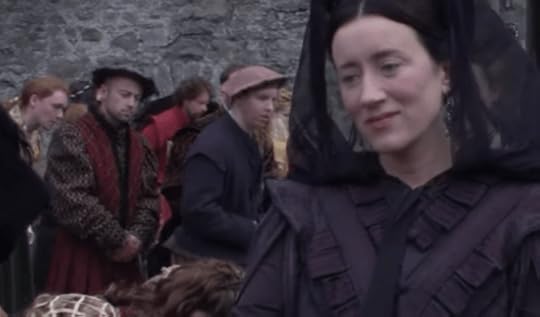 Catherine as portrayed in The Tudors (2007)(Screenshot/Fair Use)
Catherine as portrayed in The Tudors (2007)(Screenshot/Fair Use)Once again, Catherine was forced to move – this time to Buckden House in Cambridgeshire. Her popularity with the people had never wavered, and as she left, many people had gathered outside to “see her and pay her honour.”3 In August, the Pope demanded that Catherine be restored as Queen on pain of excommunication. She also received word that Anne had requested that she hand over the christening gown that her mother had given her. Catherine absolutely refused to do so. On 7 September 1533, Anne gave birth to a daughter – Elizabeth.
The following years saw a steep decline in Catherine’s health. Meanwhile, Henry planned to send her to Somersham Palace but Catherine refused to go “unless we were to bind her with ropes.”4 In May 1534, she was moved to her final residence – Kimbolton Castle. The situation was fraught, and Catherine believed she could be martyred. At the end of 1535, Ambassador Ortiz wrote, “The King has twice said that the Queen and princess are traitors, and despise the statutes, and that though he lose his crown they shall suffer the same penalty as others. The ambassador declares most seriously that they are in great danger.”5
In early January 1536, it became clear that Catherine was dying. She gave the Spanish ambassador a list of her wishes for her burial. He left her on 5 January with the promise that the physician would recall him if her health took a turn for the worst. He would never see her again.
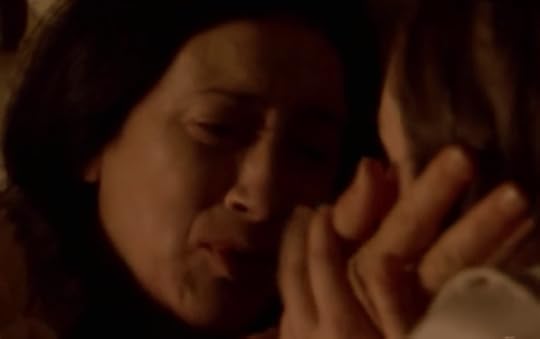 Catherine dreams of Mary on her deathbed as portrayed in The Tudors (2007)(Screenshot/Fair Use)
Catherine dreams of Mary on her deathbed as portrayed in The Tudors (2007)(Screenshot/Fair Use)On 6 January, Catherine was able to comb her hair and dress her head. At 1 a.m. the following day, she asked what time it was as she wanted to hear Mass. At dawn, she celebrated with “the utmost fervour.”6 She finally received the last rites and dictated a letter to Henry.
It read, “My most dear lord, King and husband, The hour of my death now drawing on, the tender love I owe you forceth me, my case being such, to commend myself to you, and to put you in remembrance with a few words of the health and safeguard of your soul which you ought to prefer before all worldly matters, and before the care and pampering of your body, for the which you have cast me into many miseries and yourself into many troubles. For my part, I pardon you everything, and I wish to devoutly pray God that He will pardon you also. For the rest, I commend unto you our daughter Mary, beseeching you to be a good father unto her, as I have heretofore desired. I entreat you also, on behalf of my maids, to give them marriage portions, which is not much, they being but three. For all my other servants, I solicit the wages due them, and a year more, lest they be unprovided. Lastly, I make this vow, that mine eyes desire you above all things.”7
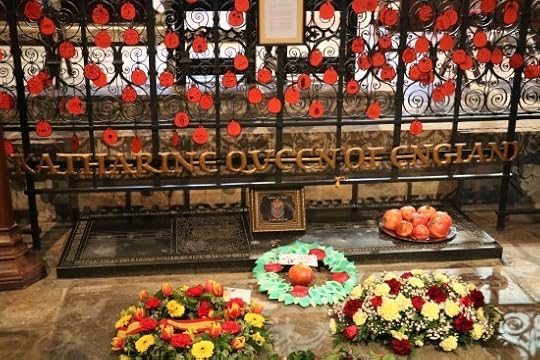 Photo by Moniek Bloks
Photo by Moniek BloksCatherine died on 7 January 1536 at 2 in the afternoon. During an examination, her heart was found to be “quite black and hideous, and even after he had washed it three times, it did not change colour.”8 Her wishes regarding her burial were disregarded, and she was interred in Peterborough Cathedral, where she still rests today. Her daughter Mary became England’s first undisputed Queen regnant.
The post Catherine of Aragon – “Mine eyes desire you above all things” (Part six) appeared first on History of Royal Women.
Book News Week 1
Book News Week 1 – 30 December – 5 January 2025
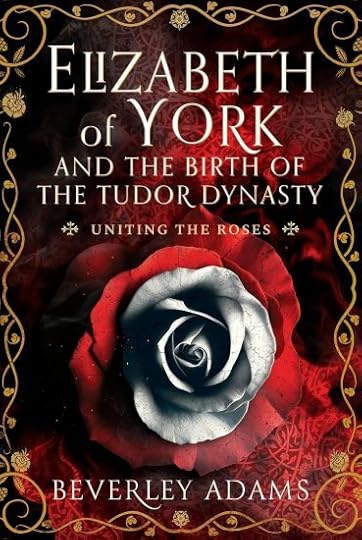
Elizabeth of York and the Birth of the Tudor Dynasty: Uniting the Roses
Hardcover – 30 December 2024 (US)
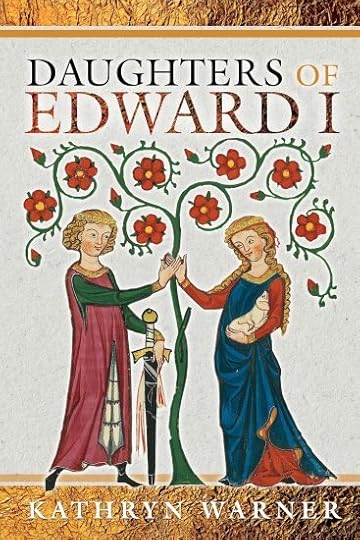
Daughters of Edward I
Paperback – 30 December 2024 (US)
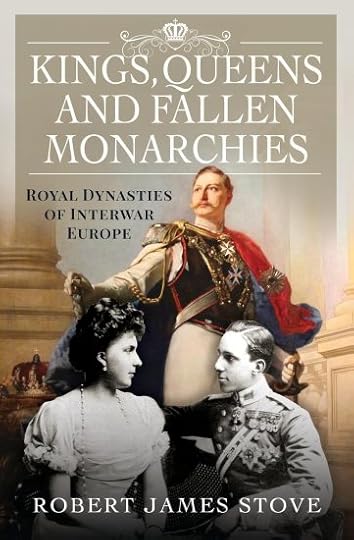
Kings, Queens and Fallen Monarchies: Royal Dynasties of Interwar Europe
Hardcover – 30 December 2024 (US)
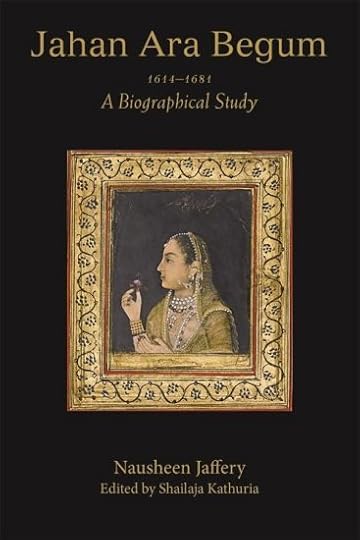
Jahan Ara Begum 1614–1681: A Biographical Study
Hardcover – 31 December 2024 (US)
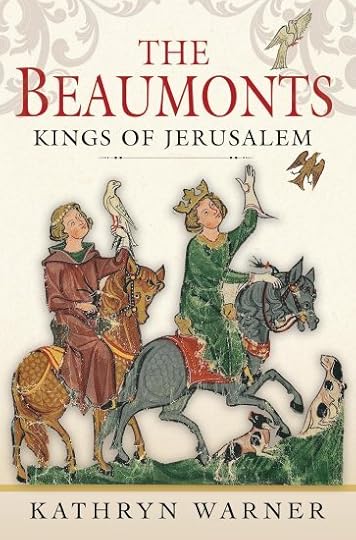
The Beaumonts: Kings of Jerusalem
Hardcover – 31 December 2024 (US)
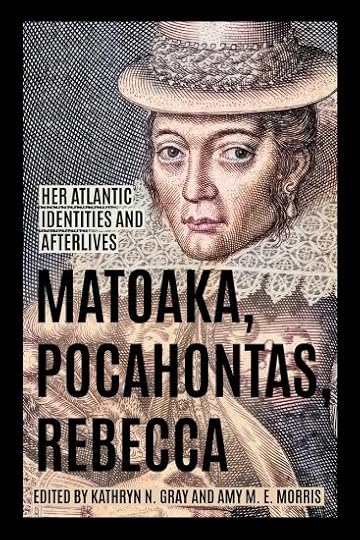
Matoaka, Pocahontas, Rebecca: Her Atlantic Identities and Afterlives (Early American Histories)
Paperback – 31 December 2024 (US)
The post Book News Week 1 appeared first on History of Royal Women.
December 27, 2024
Five royal uncle-niece marriages (Part two)
Royal uncle-niece marriages happened several times over the years. These marriages often happened for strategic reasons, such as land or power, but also because of rank and status. There simply weren’t enough others of high enough rank for marriage. The offspring of such marriages often suffered from genetic abnormalities, such as the famous Habsburg jaw. Quite often, these children did not survive to adulthood.
Here are five more of those marriages:
6. Maria Christina of the Two Sicilies & Ferdinand VII of Spain
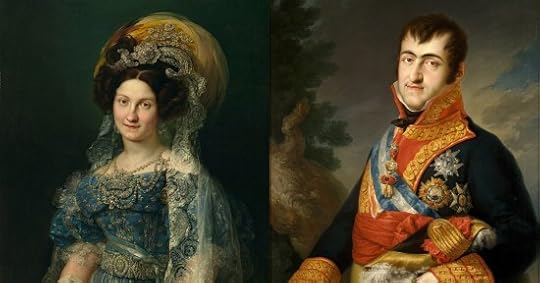 (public domain)
(public domain)Ferdinand VII of Spain was married four times. His first wife, Princess Maria Antonia of Naples and Sicily, was a first cousin. His second wife, Maria Isabel of Portugal, was also his niece. His third wife, Maria Josepha Amalia of Saxony, was not a close relation. His fourth wife, Maria Christina of the Two Sicilies, was yet another niece. Maria Christina of the Two Sicilies was born on 27 April 1806 as the daughter of King Francis I of the Two Sicilies by his second wife, Maria Isabella of Spain. On 11 December 1829, she became the fourth wife of Ferdinand VII of Spain. Maria Christina quickly fell pregnant, and she gave birth to Isabella in 1830 and Luisa Fernanda in 1832. They also had two sons, who did not survive infancy. Her husband died on 29 September, and he had set aside Salic law with the help of the Cortes Generales to allow Isabella to succeed him.
7. Luisa Carlotta of the Two Sicilies & Infante Francisco de Paula of Spain
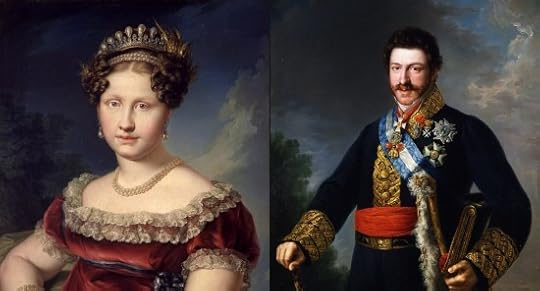 (public domain)
(public domain)Luisa Carlotta of the Two Sicilies was born on 24 October 1804 as the daughter of the future King Francis I of the Two Sicilies and María Isabella of Spain, who were first cousins. Her elder sister is the abovementioned Maria Christina. She was still only 14 years old when she married her maternal uncle, Infante Francisco de Paula of Spain, who was ten years her senior. Her mother was reportedly against the match because she considered her brother to be too reckless. He was the 14th and final child of King Charles IV of Spain and his wife, Maria Luisa of Parma. His elder brother became King Ferdinand VII of Spain. The proxy wedding between Francisco and Luisa Carlotta took place on 15 April 1819, and she arrived in Barcelona on 14 May. A second wedding ceremony took place on 9 June 1819 at the Royal Palace of Madrid.
The newlyweds moved into a wing of the Royal Palace of Madrid, and between 1820 and 1834, they went on to have 11 children. They were: Francisco de Asís Luis (1820 – 1821), Isabel Fernanda (1821–1897), Francisco de Asís, Duke of Cádiz (1822–1902), Enrique, Duke of Seville (1823–1870), Luisa Teresa (1824–1900), Eduardo Felipe (1826–1830), Josefina Fernanda (1827–1910), María Teresa (1828–1829), Fernando María (1832–1854), María Cristina (1833–1902) and Amalia (1834–1905). Their son Francisco would eventually marry his first cousin, Queen Isabella II of Spain.
Luisa Carlotta would not see the marriage between her eldest son and the young Queen take place. She died of measles on 29 January 1844 – she was still only 39.
8. Anna Caterina Gonzaga & Ferdinand II, Archduke of Austria
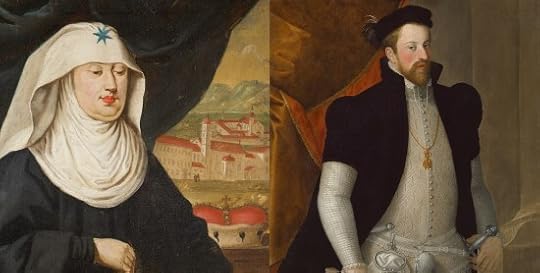 (public domain)
(public domain)Anna was born with the first names Anna Caterina in Mantua in modern-day Italy in 1566 into a wealthy and noble family. Her father was Guglielmo Gonzaga, Duke of Mantua, and her mother was Eleanora of Austria, the daughter of the Holy Roman Emperor. In 1582, Anna was called in to speak to her father, who had a request for her, which was to de-rail the plan she had for her life. Her father had been approached for Anna’s hand in marriage on behalf of Archduke Ferdinand II of Austria, who was also her uncle as he was her mother’s brother. Archduke Ferdinand was almost forty years older than Anna, but having recently been widowed from a morganatic marriage, meaning his children could not succeed him, he needed an heir. While Anna longed for a religious life and did not want to marry her ageing uncle, she did not complain and did what she was required to do for her family’s sake.
On 14 May 1582, the sixteen-year-old Anna married her fifty-three-year-old uncle and became Archduchess of Austria. Within a year, Anna and Archduke Ferdinand had a daughter together named Anna Eleonore, but sadly, the girl died the next year. A second daughter was born just months after her sister’s death and was named Maria. Maria lived a long life as a nun. In 1585, a third daughter was born to the pair and was named Anna and went on to become Holy Roman Empress after her marriage to her cousin Matthias.
The two surviving girls were raised in the Catholic faith by their mother and were educated to a very high standard. Due to their sickly nature, Anna also made sure to feed the children a special diet from a cookbook she had made personally. Archduke Ferdinand was angered by the fact that no sons were born to him and Anna, and though he loved his daughters, he could not hide his resentment. After a period of illness, Ferdinand died in 1595. His ten-year-old daughter Anna inherited his lands in Tyrol and other further Austrian territories which would later be combined with her husband’s vast dominions.
After the death of her husband, Anna Juliana could finally devote herself to a religious life as she had always planned. Anna died in 1621, and she came to be thought of as a saint with people devoting themselves to her. A case for her to be canonised was opened but has so far never been finalised.
9. Louise of Anhalt-Dessau & Gustav, Landgrave of Hesse-Homburg
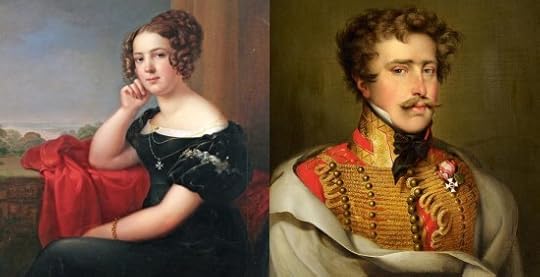 CC BY-SA 4.0 via Wikimedia Commons/Public Domain
CC BY-SA 4.0 via Wikimedia Commons/Public DomainLouise was born on 1 March 1798 as the fifth child and second daughter of Frederick, Hereditary Prince of Anhalt-Dessau and his wife Landgravine Amalie of Hesse-Homburg. She was apparently deaf from birth.
On 12 February 1818, Louise married her maternal uncle, Gustav, Landgrave of Hesse-Homburg. He was 17 years older than her. They went on to have three children together: Caroline (born 1819), Elisabeth (born 1823) and Frederick (born 1830). Frederick died shortly before his 18th birthday. As their only son had predeceased his father, Gustav was succeeded as Landgrave by his brother, Ferdinand. Ferdinand had no children and he was thus the last Landgrave of Hesse-Homburg.
Louise survived her husband by nine years and died on 11 June 1858 at the age of 60.
10. Maria Beatrice of Savoy & Francis IV, Duke of Modena
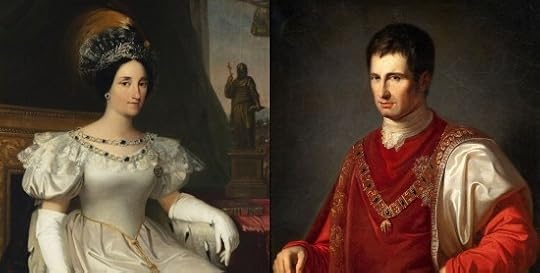 (public domain)
(public domain)Maria Beatrice of Savoy was born on 6 December 1792, the daughter of the future Victor Emmanuel I, Duke of Savoy and King of Sardinia, and Maria Theresa of Austria-Este. She was their eldest child, and six more siblings would follow, although only three sisters survived to adulthood.
On 20 June 1812, Maria Beatrice married her maternal uncle Francis, Archduke of Austria-Este. They had an age difference of 13 years. They went on to have four children together: Maria Theresa (born 1817), Francis V, Duke of Modena (born 1819), Ferdinand Karl Viktor (born 1821), and Maria Beatrix (born 1824). Maria Beatrice also held the Jacobite claim to the thrones of England, Scotland, and Ireland between 1824 and her death in 1840. Her husband died on 21 January 1846.
Part three coming soon.
The post Five royal uncle-niece marriages (Part two) appeared first on History of Royal Women.
December 26, 2024
The Alexandrine Diamond Drop Tiara
The Alexandrine Diamond Drop Tiara originally belonged to Alexandrine of Mecklenburg-Schwerin, Queen of Denmark and Iceland. It was given to the future Queen Margrethe II of Denmark for her 18th birthday.
Embed from Getty ImagesEmbed from Getty ImagesEmbed from Getty ImagesThe provenance of the tiara is somewhat unclear. It features scads of teardrop-shaped diamonds suspended en tremblant. Margrethe wore the tiara frequently when she was younger. In 1995, Queen Margrethe gave the Alexandrine Diamond Drop Tiara to her daughter-in-law, Princess Alexandra, the first wife of her younger son, Prince Joachim.
Embed from Getty ImagesEmbed from Getty ImagesAlexandra wore the tiara on her wedding day, the only one she ever wore during her marriage to Prince Joachim. The couple divorced in 2005.
Embed from Getty ImagesAlexandra kept the tiara when they divorced and has worn it since then.1
The post The Alexandrine Diamond Drop Tiara appeared first on History of Royal Women.
December 25, 2024
Catherine of Aragon – “A stranger born out of your dominion” (Part five)
The fact that Catherine and Henry had no son would haunt Catherine in the years to come. The birth of Henry Fitzroy made Henry realise that he could have a son with another woman.
In 1520, Catherine’s nephew Charles visited England. He had just been elected as Holy Roman Emperor, and Catherine was delighted and called her “greatest desire” to meet him.1 It was also her dearest wish that Mary would one day marry Charles, despite the large age gap. She reportedly wept when she finally met him. Shortly after his departure from England, Henry and Catherine headed for France for the famous Field of the Cloth of Gold, a summit between King Henry and King Francis.
Following their return to England, the years began to pass without another pregnancy for Catherine. Catherine focused her attention on her daughter, Mary, whom she considered would be the next Queen of England. A woman had never before ruled England in her own right, although Empress Matilda had tried.
In early 1525, it became clear to Catherine that Henry was in the early stages of an affair with Anne Boleyn, daughter of the diplomat Thomas Boleyn. Catherine would soon be 40 years old, and she had not conceived in over six years. Around this time, she stopped having periods. Henry also decided to send their daughter to Ludlow Castle, which must have been agony for Catherine, considering her memories of that place.
In the following year, Catherine’s marriage would completely fall apart, and she would be kept out of politics. On 17 May 1527, a secret ecclesiastical trial was convened to investigate the validity of Catherine and Henry’s marriage and the following month, Henry finally confronted her directly. The trial failed to proclaim the invalidity of their marriage, but Henry’s wasn’t done. It probably wasn’t until the summer of 1527 that Catherine realised that Henry wanted to replace her with Anne Boleyn. Catherine was offered the option of retiring to a convent, which would have allowed her daughter Mary to keep her inheritance and remain legitimate. But Catherine believed she was doing the right thing when she refused to enter a convent. The possibility of her first marriage being consummated was now brought up again.
 Catherine pleads her case as portrayed in The Tudors (2007)(Screenshot/Fair Use)
Catherine pleads her case as portrayed in The Tudors (2007)(Screenshot/Fair Use)On 31 May 1529, a court was established at Blackfriars and at some point during the proceedings, Catherine gave her now famous speech in her defence. She knelt before him and addressed him, ” Sir, I beseech you for all the love that hath been between us, and for the love of God, let me have justice. Take of me some pity and compassion, for I am a poor woman, and a stranger born out of your dominion. I have here no assured friends, and much less impartial counsel. Alas! Sir, wherein have I offended you, or what occasion of displeasure have I deserved? I have been to you a true, humble and obedient wife, ever comfortable to your will and pleasure, that never said or did any thing to the contrary thereof, being always well pleased and contented with all things wherein you had any delight or dalliance, whether it were in little or much. I never grudged in word or countenance, or showed a visage or spark of discontent. I loved all those whom ye loved, only for your sake, whether I had cause or no, and whether they were my friends or enemies. This twenty years or more I have been your true wife and by me ye have had divers children, although it hath pleased God to call them out of this world, which hath been no default in me. And when ye had me at first, I take God to my judge, I was a true maid, without touch of man, and whether it be true or no, I put it to your conscience. If there be any just cause by the law that ye can allege against me either of dishonesty or any other impediment to banish and put me from you, I am well content to depart to my great shame and dishonour and if there be none, then here, I most lowly beseech you, let me remain in my former estate and receive justice at your hands. The King your father … and my father, Ferdinand, King of Spain … thought then the marriage between you and me good and lawful. Therefore, it is a wonder to hear what new inventions are now invented against me, that never intended by honesty … I most humbly require you, in the way of charity and for the love of God, who is the just judge, to spare me the extremity of this new court, until I may be advised what way and order my friends in Spain will advise me to take. And if ye will not extend to me so much impartial favour, your pleasure then be fulfilled, and to God I commit my cause!”2
She got up and never returned to the court. The court eventually referred the question back to Rome, and the Pope wrote that the case was suspended and the marriage remained valid. This was a victory for Catherine, but their marriage could no longer be saved. Henry would continue to seek a way to get rid of her. He was frustrated with the Pope and, under the influence of Anne Boleyn, began to see a way to do things without him.
On 22 November 1529, there was a confrontation between Henry and Catherine. She told him that “he had long been suffering the pains of Purgatory on earth, and that she was very badly treated by his refusing to dine with and visit her in her apartments.”3 He told her that “as to his visiting her in her apartments and partaking of her bed, she ought to know that he was not her legitimate husband, as innumerable doctors and canonists, all men of honour and probity, and even his own almoner, Doctor Lee, who had once known her in Spain, were ready to maintain.”4 She retaliated that “the principal cause alleged for the divorce did not really exist, because she had come to him as a virgin, as he himself had owned upon more than one occasion.”5
Part six coming soon.
The post Catherine of Aragon – “A stranger born out of your dominion” (Part five) appeared first on History of Royal Women.
December 24, 2024
Imperial Consort Yu Ji of Qi – The wrongfully accused Imperial Consort who used reason to help strengthen her kingdom
Imperial Consort Yu Ji was one of the wives of King Wei of Qi during the Warring States Period. When King Wei of Qi began to neglect state affairs, Imperial Consort Yu Ji of Qi began to advise him in politics.[1] However, she created an enemy and was unjustly accused of having an illicit affair.[2] Yet, Imperial Consort Yu Ji of Qi managed to prove her innocence.[3] Imperial Consort Yu Ji has been credited with helping her husband make Qi into a powerful state.[4]
Imperial Consort Yu Ji of Qi was born in the fourth century B.C.E.[5] She lived during the Warring States Period (which lasted from 475-221 B.C.E.).[6] During this period, the seven states of China–Qin, Chu, Zhao, Wei, Han, Yan, and Qi–declared independence from the ruling Zhou Dynasty and formed their own Dynasties.[7] The states were often in conflict with one another.[8] Imperial Consort Yu Ji of Qi was from the Ji clan in the State of Yu (modern-day Shanxi Province).[9] Her personal name was Juanzhi.[10] Her parents are unknown.[11] Yu Ji became the Imperial Consort to King Wei of Qi (modern-day Shandong Province).[12]
King Wei of Qi reigned from 356-320 B.C.E. Sometime during his reign, King Wei of Chu began to neglect state affairs.[13] Imperial Consort Yu Ji of Qi urged him to take state affairs seriously.[14] She advised him to dismiss his incompetent Prime Minister Zhou Pohu.[15] Imperial Consort Yu Ji of Qi also encouraged him to make Beiguo the new Prime Minister instead.[16] Zhou Pohu feared that he would quickly lose his position as Prime Minister.[17] He retaliated by accusing Imperial Consort Yu Ji of Qi and Beiguo of having an illicit affair.[18]
King Wei of Qi conducted an investigation on the charge of Imperial Consort Yu Ji’s illicit affair with Beiguo.[19] During the investigation, King Wei of Qi incarcerated Imperial Consort Yu Ji of Qi.[20] Prime Minister Zhou Pohu bribed the official in charge of the investigation to give Imperial Consort Yu Ji of Qi a guilty verdict.[21] However, King Wei of Qi personally interviewed his Imperial Consort and realised that she was innocent.[22] He released her.[23] He honoured Imperial Consort Yu Ji of Qi at both his court and the market.[24]
King Wei of Qi dismissed Zhou Pohu as his Prime Minister.[25] He strengthened his troops.[26] He worked diligently on state affairs.[27] Due to his hard work in ruling his kingdom, Qi became a strong state.[28] King Wei of Qi died in 320 B.C.E. It is unknown when and how Imperial Consort Yu Ji of Qi died.[29]
Imperial Consort Yu Ji of Qi cared deeply about the state of her kingdom.[30] She was very courageous in advising her husband on political affairs.[31] Even though she was slandered unjustly, Imperial Consort Yu Ji of Qi managed to prove her innocence and was honoured.[32] King Wei of Qi eventually listened to her advice and used it to strengthen his kingdom.[33] Imperial Consort Yu Ji of Qi is praised for her goodness.[34] In Biographies of Eminent Women, her biography is categorised under “Biographies of Those Able in Reasoning.”[35]
Sources:
Chen, X. (2019). “The Ideology and Significance of the Legalists School and the School of Diplomacy in the Warring States Period.” 4th International Conference on Modern Management, Education Technology and Social Science (MMETSS 2019). Atlantis Press.
Cook, C. A. (2015). “Yu Ji, Wife of King Wei of Qi”. Biographical Dictionary of Chinese Women: Antiquity Through Sui, 1600 B.C.E. – 618 C.E. (L. X. H. Lee, Ed.; A. D. Stefanowska, Ed.; S. Wiles, Ed.). NY: Routledge. pp. 89-90.
Liu, X., Kinney, A. B. (2014). Exemplary Women of Early China: The Lienü Zhuan of Liu Xiang. United Kingdom: Columbia University Press.
[1] Cook, 2015
[2] Cook, 2015
[3] Cook, 2015
[4] Cook, 2015
[5] Cook, 2015
[6] Liu and Kinney, 2014
[7] Chen, 2019
[8] Chen, 2019
[9] Cook, 2015
[10] Liu and Kinney, 2014
[11] Cook, 2015
[12] Cook, 2015
[13] Cook, 2015
[14] Cook, 2015
[15] Liu and Kinney, 2014
[16] Liu and Kinney, 2014
[17] Liu and Kinney, 2014
[18] Liu and Kinney, 2014
[19] Liu and Kinney, 2014
[20] Cook, 2015
[21] Cook, 2015
[22] Cook, 2015
[23] Liu and Kinney, 2014
[24] Liu and Kinney, 2014
[25] Liu and Kinney, 2014
[26] Liu and Kinney, 2014
[27] Liu and Kinney, 2014
[28] Liu and Kinney, 2014
[29] Cook, 2015
[30] Liu and Kinney, 2014
[31] Liu and Kinney, 2014
[32] Liu and Kinney, 2014
[33] Liu and Kinney, 2014
[34] Cook, 2015
[35] Cook, 2015, p. 90
The post Imperial Consort Yu Ji of Qi – The wrongfully accused Imperial Consort who used reason to help strengthen her kingdom appeared first on History of Royal Women.



